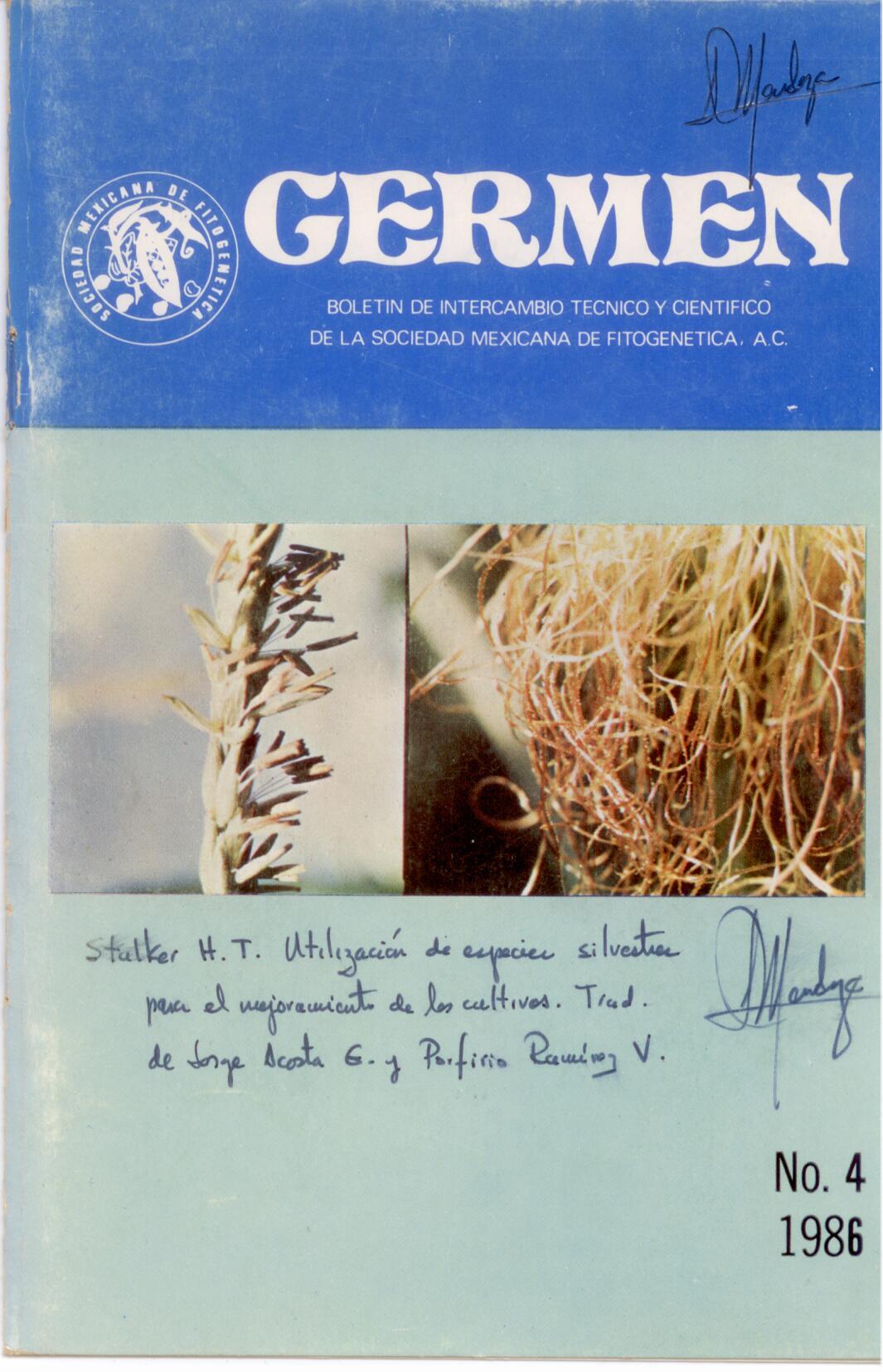USE OF WILD SPECIES FOR THE IMPROVEMENT OF CROPS
Main Article Content
Abstract
Plant breeding has progressed significantly over the past 10 to 15,000 years. The first farmers not only exploited their environment, they even further domesticated the now modern cultivated plants. The harvest-plant-harvest cycle associated with selection pressure has transformed low-yielding plants into modern and productive ones.
today's cultivars. Over the centuries of cultivation, the wild species-weed-domesticated species complex has involved the large groups of cultivated species. Breeding techniques have resulted in increases in yield and have resolved problems associated with quality, insects, diseases and harvest. The plant breeder has historically used the variability of landraces for the selection and improvement of crops. However, as modern varieties are planted more widely and as population centers grow, many landraces are no longer cultivated and associated wild species have become extinct. Additionally, the genetic resources and variability available for many cultivated varieties are extremely limited (Harlan, 1972).
Just as additional genetic resources are required to fill gaps in population improvement, unique and imaginative procedures are necessary to fully exploit the potential of our crop plants. The use of wild species is a method designed to introduce additional germplasm to cultivated varieties. The first known interspecific hybrid was made in 1717 between the common carnation and the bouquet carnation by Thomas Fairchild (Allard, 1960). Since that time, thousands of interspecific crosses have been attempted. Many attempts were probably made by researchers who were only curious about the progenies of hybrid species. However, the incorporation of desirable genes into cultivated varieties has acquired great importance. Unique hybrid genotypes often produce plants of unexpected types that have economic value.
Although the literature is full of reports on interspecific hybrids, the number of their descendants currently used by farmers is more than limited (see Harlan, 1976a; Hawkes, 1977; Sánchez-Monge and García-Olmedo, 1977). Obtaining hybrids between cultivated and wild species requires great effort. The first hybrid generations are often partially sterile and many programs are abandoned after a few selection cycles because of continued sterility, low yields and poor quality characteristics in the derived hybrids. Mechanical, chromosomal, genetic or cytoplasmic barriers can present setbacks for its use.
The exploitation of species related to cultivated plants requires the integration of many disciplines. Experts in the fields of botany, taxonomy, cytology, ecology, genetics, plant breeding and biochemistry will greatly increase the chances of eventual success. A knowledge of centers of origin, centers of diversity and relationships between species also allows progress in the use of germplasm. The effort required to transfer a single gene from a wild to a cultivated species is often very great and quantitative traits are even more difficult to transfer.
The integrity of the crop phenotype must be maintained to ensure high-yielding varieties within a production regime. Although a great effort may be required, wild species have provided germplasm for some crops with great economic benefits.
The following review is an attempt to present a view of the successful transfer of useful genes from wild species to their cultivated relatives. This review of select examples will illustrate different points related to the use of wild species for cultivated plants and will not attempt to review the entire area of interspecific hybridization. Although hybrid species have been used more extensively in ornamental crops than in other crops, ornamental crops will not be included and vegetable and horticultural crops will be briefly discussed. Emphasis will be placed on problems associated with the use of interspecific hybrids for the improvement of crop species, the methods used to overcome these obstacles, an estimate of the value of the effort to produce something valuable, and the potential for utilization of germplasm from other wild species. Attempts to use wild germplasm to improve crop species depend on the relationships between the species, the mode of reproduction, the extent to which the crop can be genetically changed without reducing economic value, the number of genes controlling the trait in question, from the methods for breaking up undesirable linkage groups to the ease and power of the selection methods and from the amount of effort that can be devoted to the problem. Before presenting the review of the use of wild germplasm in crop improvement, biosystematic considerations (such as taxonomy and relative species), barriers to hybridization, and approaches used for germplasm exploitation will be discussed.

